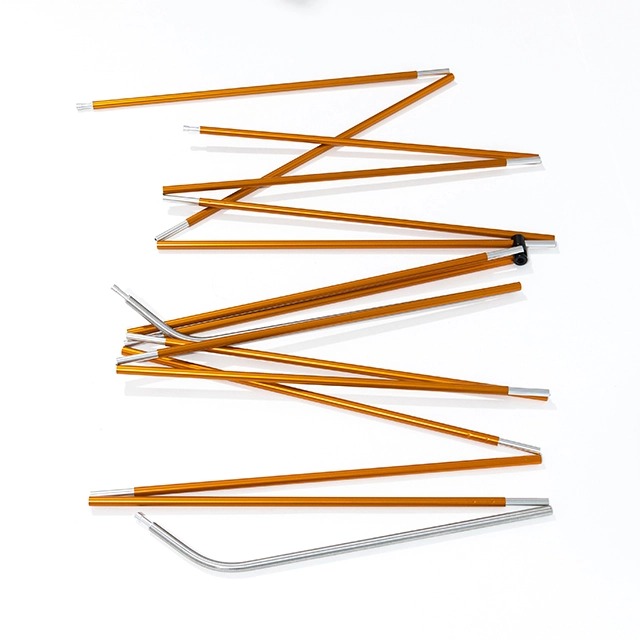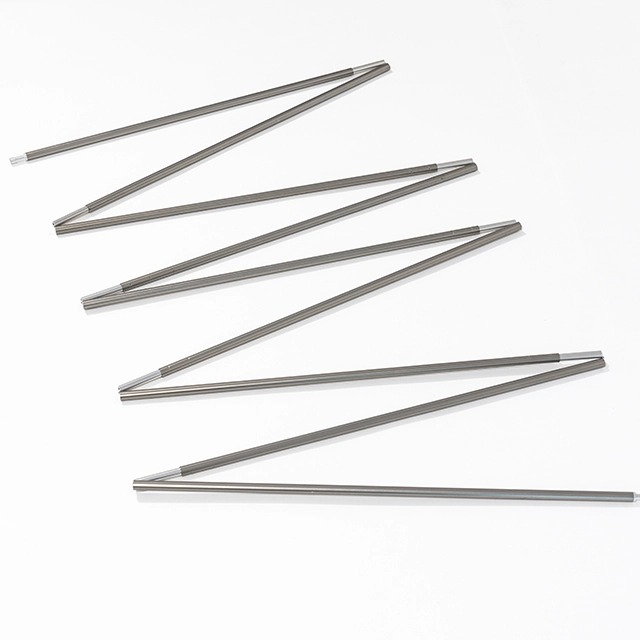In the world of outdoor gear manufacturing and tent architecture, the Customizable Aluminum Tent Pole stands as a critical component. Whether you're a startup developing ultralight camping shelters or an established brand launching an expedition-grade tent line, choosing the right tent pole can make or break the final product. With customization now a key differentiator in competitive outdoor markets, sourcing tent poles tailored to your specific project requirements demands attention to detail, technical insight, and clear prioritization.
This article explores the essential factors to consider when sourcing customizable aluminum tent poles, offering a well-rounded guide for designers, purchasing managers, and R&D engineers. We'll also address common FAQs and present comparative data in table form to make your sourcing journey more informed and streamlined.
Understanding the Role of Customizable Aluminum Tent Poles in Product Development
Aluminum tent poles aren't just structural supports—they directly influence a tent's durability, weight, ease of setup, and resistance to environmental conditions. The “customizable” aspect allows for specific tailoring to your brand’s unique requirements: color coordination, length ranges, locking mechanism types, wall thickness, and alloy composition.
Custom poles are used in a variety of outdoor applications, such as:
Trekking and backpacking shelters
Event canopies and awnings
Tactical and military gear
Emergency relief tents
Overlanding and car camping accessories
When sourcing aluminum poles for these types of custom projects, it's essential to evaluate both technical performance and manufacturability, especially when balancing cost, function, and branding.
![Customizable Aluminum Tent Pole Customizable Aluminum Tent Pole]()
Alloy Selection – Why Aluminum Matters and Which Grade to Choose
Aluminum alloys are popular due to their lightweight nature, corrosion resistance, and strength-to-weight ratio. But not all aluminum tent poles are created equal. The performance and cost vary widely depending on the alloy composition.
Common Aluminum Alloys Used in Tent Poles
| Alloy Type | Characteristics | Typical Use |
| 6061 | High strength, weldable, corrosion-resistant | Standard tents and general outdoor gear |
| 7001 | Superior strength, excellent fatigue resistance, anodizable | Premium expedition and ultralight tents |
| 7075 | Aircraft-grade strength, minimal flex, pricier | High-end or tactical shelters |
Key Insight: For most custom projects, 7001-T6 aluminum is often the best blend of weight and rigidity, especially when anodized for surface hardness and aesthetics. However, if cost is a primary constraint, 6061 may suffice for consumer-grade or promotional-use tents.
Sizing & Telescopic Design – Flexibility in Length & Packing
Modern applications often require tent poles that are not just fixed-length, but telescopic, collapsible, or even modular. This allows for easier transportation and field-adjustments.
Custom Length and Tube Diameter Options
A reputable manufacturer will offer diameter ranges (typically from 16mm to 35mm) and variable tube wall thicknesses (0.8mm to 2mm), depending on strength requirements. Telescopic designs often incorporate locking systems, such as:
Twist lock mechanisms
Pin-and-button locks
Lever clamps
Customization can include choosing the number of telescopic sections, determining collapsed and extended lengths, and even adding measurement marks for field settings. These decisions will impact:
Pro Tip: For adjustable outdoor tarp poles, collapsible three-section designs are ideal for balancing compact storage and height flexibility.
Surface Finish & Color Customization – Aesthetic Meets Function
Beyond mechanical attributes, the finish of an aluminum tent pole plays a crucial role in both branding and corrosion resistance. Most customizable poles today are anodized, which enhances the material’s oxide layer for longevity.
Anodizing Benefits & Color Options
The anodizing process also allows for multi-color options, such as black, red, green, gold, blue, and silver, aligning with brand identities or camouflage needs.
| Surface Finish | Features | Use Cases |
| Clear anodized | Basic protection, industrial look | Internal-use poles |
| Colored anodized | Brand identity, enhanced durability | Retail outdoor gear |
| Matte black | Tactical, anti-reflective | Military, stealth shelters |
Custom logos can also be laser-engraved or screen-printed during this stage. If UV resistance or salt-spray exposure is a concern (e.g., beach tents), the anodizing layer’s quality and sealing become vital.
Reminder: Not all anodizing layers are equal—request thickness specifications (typically 8–15 microns) for long-lasting performance.
Accessories and End Fittings – Small Parts, Big Impact
Even the most well-designed aluminum tent pole can fail without the right end fittings. This often-overlooked aspect includes rubber feet, plastic caps, spikes, hooks, or carabiner clips.
Material Considerations for End Accessories
Common end accessories include:
Rubber anti-slip feet: Prevent tent slippage on smooth or rocky ground.
Plastic cap inserts: Protect tent fabric and allow smooth pole glide.
Steel or aluminum tips: Provide direct ground penetration for stability.
Guy line hooks: Attach tension cords to tarp edges.
Ensure these accessories are made of durable, weatherproof materials, such as reinforced nylon or stainless steel. For ultra-light projects, even these components may be considered for weight savings.
Checklist:
Do the ends require thread inserts for modular extensions?
Are the caps replaceable or permanently bonded?
Can the accessories be customized with your branding?
Minimum Order Quantity (MOQ), Lead Time & Customization Limits
Before placing an order, it’s important to understand the production limitations of the supplier—especially for custom aluminum poles.
What to Ask Your Manufacturer
What is the MOQ for customized colors or dimensions?
What is the standard lead time for prototypes and mass production?
Can the manufacturer support laser logo engraving or OEM packaging?
Many buyers underestimate the importance of clear CAD drawings and technical specifications. The more detailed your RFQ (Request for Quotation), the more accurate your supplier’s pricing and feasibility feedback.
![Customizable Aluminum Tent Pole Customizable Aluminum Tent Pole]()
Frequently Asked Questions (FAQ)
Q1: What is the best aluminum for ultralight tents?
A1: 7001-T6 is typically the preferred alloy due to its high strength-to-weight ratio, resistance to fatigue, and good anodizing capability.
Q2: Can I get aluminum poles in custom colors?
A2: Yes. Through anodizing, you can select from a wide variety of color finishes. However, MOQ and additional fees may apply.
Q3: Are telescopic aluminum poles strong enough for heavy-duty tents?
A3: Yes, especially when designed with reinforced locking mechanisms and thicker wall gauges. You should specify intended use and loading scenarios when ordering.
Q4: Can aluminum poles be used in salty or coastal environments?
A4: With proper anodized coating (preferably sealed), aluminum poles can resist corrosion even in high-salinity environments. You may also request salt-spray testing certifications from your supplier.
Q5: Can I request custom accessories like rubber tips or hooks?
A5: Absolutely. Many suppliers offer a full range of end accessories, including anti-slip rubber feet, spike heads, or even modular connectors. Custom tooling may be required.
Conclusion
Sourcing a Customizable Aluminum Tent Pole for your project involves more than just comparing prices. It requires understanding the alloy, structure, surface treatment, end accessories, and supplier capabilities in full.
To ensure the success of your custom outdoor product, you should:
Identify exact use-case and environmental needs.
Collaborate with an experienced manufacturer that can prototype quickly.
Don’t compromise on anodizing quality or locking mechanisms.
Clearly document all specifications before placing an order.
Ultimately, the pole you choose becomes a direct reflection of your brand’s reliability, user safety, and attention to quality. In a crowded outdoor gear market, details like this make a lasting impression.













